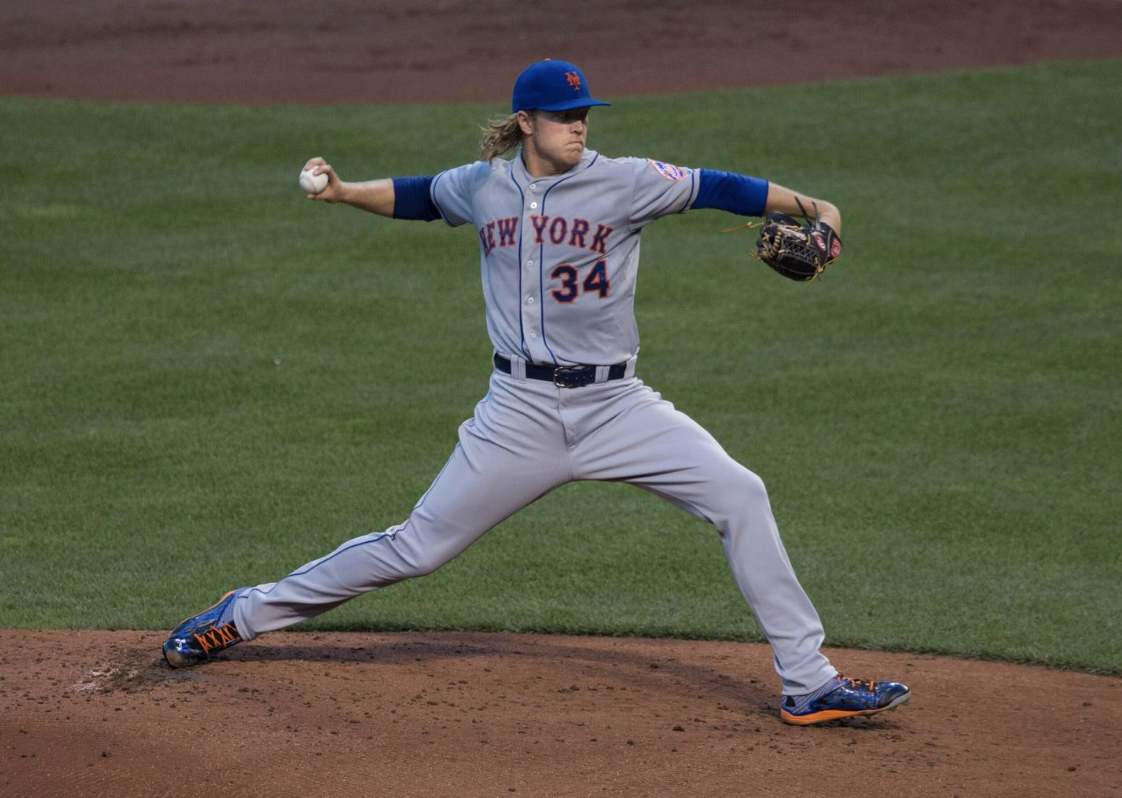The Value of Grunting
Today’s blog post comes from guest contributor and good friend of Pursuit, Dr. Tyler Dobos. Dr. Dobos’ was a varsity baseball player at the University of British Columbia where he pitched for the Thunderbirds. After he finished at UBC he furthered his education alongside Dr. Gatto at the Canadian Memorial Chiropractic College. Dr. Dobos currently works for the Toronto Blue Jays and also has previous experience in professional volleyball.
——
Recently, I read a post by a colleague who wrote about “grunting”. More specifically, the title of the post was: “Why do tennis player’s grunt [when hitting the ball]?”
His article revealed the grunt was necessary in creating some form of core (abdominal) bracing. The top reasons for core bracing in tennis included:
To increase force output (via Core Stiffness)
To help improve rhythm (Timing mechanism)
Taking this knowledge into account, I started to wonder about the link between grunting and increased force regarding baseball players (pitchers more specifically).
Immediate thoughts that crossed my mind included:
1) Can I relate this to baseball?
And if so:
2) Should you forcibly exhale, or is holding your breath adequate?
3) Do you need to make a noise for this to work?
4) Should this be incorporated into already efficient mechanics? (I.e. can it benefit everyone?)
First thing’s first, does this make any sense?
When comparing abdominal bracing while throwing, and “simply breathing normally”, the argument seems like a no-brainer. Having internalized pressure engages the core musculature, which in turn improves coordination, force, and speed (seen here, and here, and here). That’s not to say that if you don’t brace while throwing that there is no involvement of the core - this is almost certainly untrue - but it is likely to a lesser degree.
Second - I want you to try this wherever you are seated.
I want you to grunt.
Push air out through your mouth and make some noise.
Now, do it again, and pay attention to your chest.
What is likely happening is that you are flexing forward while doing so as your ribs are pulled downwards (think forward velocity). It happens when you cough too (nobody coughs several times in a row while extending backwards, but they most certainly flex forward).
Type in grunting baseball pitcher in Youtube, and you get this video. Couple of guys throwing gas. Not surprising are the comments, most people seemingly shocked that they had never noticed baseball players grunting on TV before. Even if you work with pitchers daily, is it something you pay attention to? Who grunts, who holds their breath, who does something completely strange?
Testing ideas in your workshop, or while sitting at your desk is one thing, but peer-reviewed data supporting these claims would certainly help.
A quick internet search reveals that Graeme Lehman encountered the same information, and wrote about this very topic in January of 2016 - essentially 4 years ago, which you can read about here.
The pièce de résistance of the post is a paper published in 2014 by O’Connell et al, which investigated “The effects of “grunting” on serve and forehand velocities in collegiate tennis players.”
The conclusion? The velocity, force, and peak muscle activity during tennis serves and forehand strokes are significantly enhanced when athletes are allowed to grunt (velocity by approximately 5%). This happened regardless of gender, grunt history, tennis experience, or perceived advantage of grunting.
It is the scientific basis on which the article was written, and I think Greame has done a great job interpreting and extrapolating its role to baseball.
Rather than writing the same thing, I simply want to highlight and comment on a few sections, since they answer a few of my own questions, and help provide background information.
“Increased dynamic and static force production occurs when the trunk is in a more stable position. This is vital for throwing hard because we need some muscles to produce movement while others provide stationary stability to allow those moving parts to move faster.”
It is more efficient to transfer the forces of the legs to the upper body and arms through a stiff, solid core than a soft one. Forces transfer better through solids, from a purely physical standpoint. Think about trying to jump off of concrete and trying to jump off sand. In every instance, you will be able to jump higher off the concrete, since less force is dissipated away into the softer sand. The grunt increases momentary stiffness. The fast moving dynamic arms and legs need something to rotate around.
So why not try and be stiff the entire time? Graeme has answered that too.
“If you try grunting the whole time and try to “muscle” the ball to the plate the radar gun will show a decrease in velocity. One of the real secrets to enhanced athletic performance is the ability to quickly switch between contracting and relaxing your muscles. Going back and forth from contracted to relaxed muscles has been coined the double impulse theory.”
Described in the literature as a “Double Peak in Muscle Activation to Enhance Strike Speed and Force” the double impulse theory postulates that the most effective way to create force and velocity is to have an initial contraction, followed by a relaxation, followed by a contraction again. If you can shorten the time frame this happens in, your velocity WILL improve. By staying completely tense the entire time, you lose the ability to move quickly.
By grunting, you are able to momentarily, quickly increase core stiffness and transfer forces while negating severe energy loss. Beginning with relative relaxation, the period immediately prior to the “grunt” likens to the first contraction, the loss of air signifies the "relaxation", followed shortly thereafter by a final contraction. If you were to hold your breath the entire time while throwing, you are forcing the system to dissipate energy in the form of stiffness at the expense of speed.
The stiffest moment occurs immediately prior to the release of air. This should be timed so that this moment is when the forces are being transferred from the lower half to the upper half. The release of air after allows for faster rotation.
If my explanation of this is confusing, read Graeme’s - which I will again link here.
For those who have gotten this far and thought to themselves “I can’t just start grunting when I throw, I can see the ‘yips’ coming already”, take a breath and slow down. It may take some practice to figure out the timing. If you practice enough, recall that some research indicates over time it is linked with improved rhythm. As with any movement-based change in delivery, or mechanics - these things take time. Change will not likely happen overnight.
With a few of my questions being answered, I continued my literature search, fully expecting to find research under “grunting and baseball”. To the best of my knowledge, it still does not exist.
Thankfully, O’Connell et al. wanted to take their study even further, and in 2016 they released a newer paper, titled: “The effects of forced exhalation and inhalation, grunting, and valsalva maneuver on forehand force in collegiate tennis players.” Yes, we still have to wishfully extrapolate this to baseball, but it looks to directly investigate what I wanted to know all along.
For the remainder of this post, I believe it is necessary to differentiate between the different types of breathing going on here. The researchers now acknowledge a difference between a forceful exhalation and a grunt.
Gr - grunting, think expelling air from your lungs, loudly
VM - valsalva maneuver, think holding your breath and increasing internal pressure
FI - forced inhalation, think sharply drawing a breath into your lungs
FE - forced exhalation, think grunt - only without making nearly as much audible sound
Within this study, subjects performed 3 repetitions of maximal 2- to 3-second isometric forehands with each breathing condition with 30second rest between contractions. Sixty seconds of rest was provided between breathing conditions.”
Main takeaway:
According to the data (which can be visualized in figure 1, below) there was an insignificant increase in force production favouring Gr over FE, and significant increases when compared to both VM and FI.
In other words, grunting and forceful exhalation, are both superior to holding your breath, and grunting may reign king over all. The authors suggest that this could be due to small sample size, and/or the fact that forces were only measured against a static force plate as opposed to a dynamic on court assessment.
“The small numerical difference in isometric forehand force with GR and forceful exhalation in the current investigation may result in a small difference in forehand velocity.”
It is suggested that this difference is insignificant in tennis, and that it is more important to consider accuracy as having a greater impact than velocity.
However, I argue that if you consider that a tennis court is approximately 80 feet, plus another 5 or so to the receiver; and in baseball 60.5 feet from rubber to plate, minus 5 or so to get to release point - you have a very rough difference of 30 feet.
In this example, I believe it would make a large enough difference to have an impact. Even if it is just a single mph difference, often times that is the difference between a ball hit opposite field down the line, or just foul.
Of coincidental interest, is that there has also been some research done investigating the effects an audible grunt has on opponent perceptions of velocity as seen here. As mentioned in this study, “The behavior is considered to deny opponents the benefit of receiving optimal multi-sensory information in order to plan their own shots.” Now, this is much different in the realm of tennis when compared to baseball with regard to noise (the quiet tennis arena compared to a rowdy baseball stadium). I have been to professional baseball games in late August between non-contenders however, and boy are they ever quiet. If there is an additional psychological perk to grunting over forceful exhalation – bonus!
Where does this leave us?
Someone needs to do peer-reviewed research on this in baseball
Grunting compared to non-grunting creates velocity changes of approximately 5%, whether or not you had a history of grunting (in tennis)
Grunting is significantly superior to Valsalva (holding your breath) maneuver and forceful inhalation in force production (in tennis). So go ahead and make some noise while you do it!
Grunting and forceful exhalation are linked with increased core stiffness, which is necessary for force transfer in rotational movement, and a host of other things (force development, coordination, etc.)
This tactic is utilized throughout professional baseball - even if you cannot typically hear it!
So go ahead, try and throw hard, make some noise, and grunt!
References:
O'Connell, Dennis G., et al. "The effects of “grunting” on serve and forehand velocities in collegiate tennis players." The Journal of Strength & Conditioning Research 28.12 (2014): 3469-3475.
McGill, Stuart M., et al. "Evidence of a double peak in muscle activation to enhance strike speed and force: an example with elite mixed martial arts fighters." The Journal of Strength & Conditioning Research 24.2 (2010): 348-357.
Kibler, W.B., Press, J. & Sciascia, A. Sports Med (2006) 36: 189. https://doi.org/10.2165/00007256-200636030-00001
McGill, Stuart M., et al. "Coordination of muscle activity to assure stability of the lumbar spine." Journal of electromyography and kinesiology 13.4 (2003): 353-359.
O'connell, Dennis G., et al. "The Effects of forced exhalation and inhalation, grunting, and valsalva maneuver on forehand force in collegiate tennis players." The Journal of Strength & Conditioning Research 30.2 (2016): 430-437.
Farhead, Nader, and T. David Punt. "Silencing Sharapova's grunt improves the perception of her serve speed." Perceptual and motor skills 120.3 (2015): 722-730.
Lehman, Graeme. "Grunting To Improve Throwing Velociy". Treadathletics | Remote Training For Baseball Pitchers, 2016, https://treadathletics.com/grunting-increases-velocity-by-5/.

